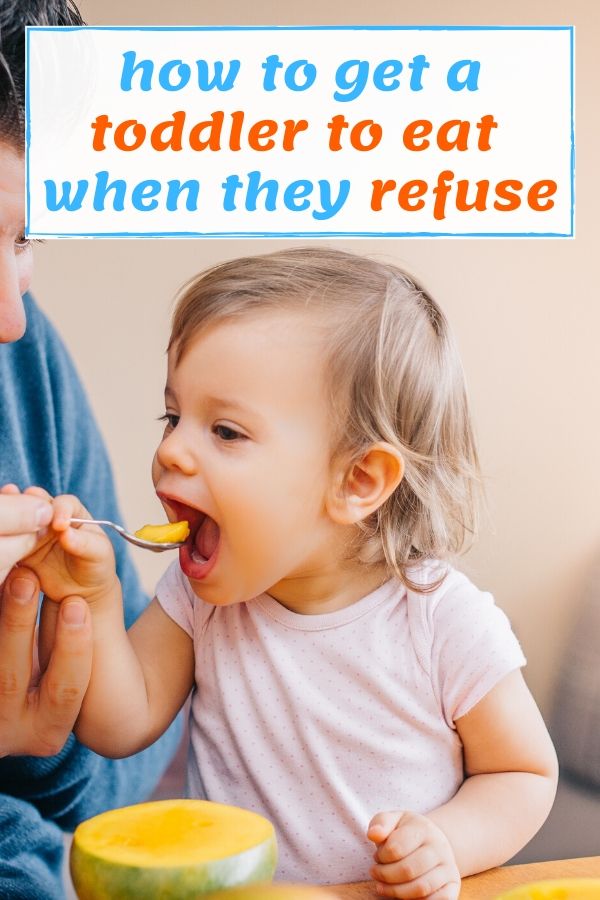Last Updated on January 15, 2025
When a child refuses to eat, try these strategies to encourage them: be patient and keep trying, serve rejected foods again, accept “I’m not hungry” as an answer, acknowledge progress, and set a good example with a balanced diet. It’s important not to force or pressure the child to eat.
Sometimes a toddler refusing to eat could be a sign of a medical issue or food sensitivity, so it’s essential to consider those possibilities. Food neophobia, the reluctance to eat new foods, and picky eating are also common in children.
For more information on dealing with picky eaters and understanding food neophobia, consult reliable sources like Healthline and PubMed.
The Reasons Behind Food Refusal
Mealtime can often turn into a battle of wills when you have a child who refuses to eat. It can be frustrating and worrisome for parents, but understanding the reasons behind food refusal can help you address the issue effectively. By identifying the underlying issues that may be causing your child’s reluctance to eat, you can find strategies to encourage them to develop a healthy and positive relationship with food.
Common Reasons Why Children Refuse To Eat
There are several common reasons why children may refuse to eat. By understanding these reasons, you can approach the situation with empathy and find ways to overcome the challenges together. Here are a few common reasons behind food refusal:
- Food neophobia: This refers to the reluctance or avoidance of new foods. Children with food neophobia might be hesitant to try new foods, leading to a limited diet.
- Pressure: Children can feel pressured to eat certain foods, especially if they are being forced or coerced. This pressure can create negative associations with mealtime and cause them to refuse food.
- Illness or discomfort: When children are not feeling well, they may refuse to eat. This can be due to a loss of appetite, nausea, or other physical discomfort.
Identifying Underlying Issues (e.g., Pressure, Illness)
Identifying the underlying issues causing your child’s food refusal is crucial in finding suitable solutions. Here are some signs to look out for:
| Issue | Signs and symptoms |
|---|---|
| Pressure |
|
| Illness or discomfort |
|
Recognizing Signs Of Progress In Food Acceptance
It’s important to acknowledge and celebrate any progress your child makes in food acceptance. Recognizing these signs can motivate them to continue trying new foods and expand their palate. Here are some signs of progress to watch out for:
- Trying a new food voluntarily
- Accepting a previously rejected food
- Showing curiosity and interest in different foods
By being patient, understanding the reasons behind food refusal, and recognizing signs of progress, you can gradually encourage your child to develop a positive attitude towards eating. Remember, every child is different, and it’s essential to create a supportive and nurturing environment to help your child overcome their food-related challenges.
Strategies To Encourage Healthy Eating Habits
When it comes to getting a child to eat when they refuse, it can be a challenging task for parents. However, there are several strategies that you can implement to encourage healthy eating habits in your child. By creating a positive mealtime environment, offering a variety of nutritious food options, and involving your child in meal planning and preparation, you can make mealtimes more enjoyable and increase the likelihood of them trying and enjoying different foods. Let’s explore these strategies in detail:
Creating A Positive Mealtime Environment
One effective way to encourage your child to eat when they refuse is by creating a positive mealtime environment. This involves making mealtimes pleasant and stress-free. Here are some tips:
- Set a designated eating area that is free from distractions like toys or electronic devices.
- Ensure the atmosphere is calm and inviting, with minimal distractions or noise.
- Establish a routine by having regular meal and snack times.
- Sit down and eat with your child whenever possible to provide a positive role model.
Offering A Variety Of Nutritious Food Options
Another strategy to encourage healthy eating habits is by offering a variety of nutritious food options. Here are some tips to ensure your child gets a well-balanced diet:
- Include a range of fruits, vegetables, whole grains, and lean proteins in their meals.
- Present the food in a visually appealing way, using different shapes and colors.
- Introduce new foods gradually and repeatedly, as it often takes several exposures for a child to develop a taste for them.
- Offer a choice between different options, allowing your child to have some control over their meal.
Involving Your Child In Meal Planning And Preparation
Lastly, involving your child in meal planning and preparation can make them more invested in the food they eat. Here are some ideas to get them involved:
- Take your child grocery shopping and let them choose fruits, vegetables, and other healthy items.
- Allow your child to assist in age-appropriate cooking tasks like washing vegetables or mixing ingredients.
- Encourage them to create their own healthy snacks or meals by providing simple recipes or guidance.
- Give them the opportunity to set the table and serve the food, fostering a sense of responsibility and pride.
By implementing these strategies, you can create a positive mealtime environment, offer a variety of nutritious food options, and involve your child in meal planning and preparation. Remember to be patient and persistent, as it can take time for your child to develop healthy eating habits. With consistent effort, you can help your picky eater overcome their refusal and develop a well-rounded palate.
Dealing With Picky Eating Challenges
Encouraging a picky eater to try new foods can be challenging, but there are strategies you can try. Be patient and keep serving the rejected foods, praise them for trying new things, and create a positive mealtime environment. Understanding their preferences and addressing any underlying issues can also help improve their eating habits.
Addressing Specific Challenges Like Food Neophobia
One common challenge when dealing with a picky eater is food neophobia, which refers to the reluctance or avoidance of new foods. Children with food neophobia often consume a limited variety of familiar foods while rejecting a substantial amount of unfamiliar ones. To address this challenge:
- Introduce new foods gradually: Start by offering small amounts of new foods alongside familiar ones. This can help familiarize the child with different tastes and textures without overwhelming them.
- Make new foods appealing: Present new foods in an attractive and visually appealing way. Use colorful plates and arrange food creatively to catch your child’s attention.
- Encourage small tastes: Instead of pressuring your child to eat a full serving of a new food, encourage them to take small bites or try a few mouthfuls. This can help them become more comfortable with unfamiliar flavors.
- Be a role model: Demonstrate your own willingness to try new foods by eating them yourself. Children often imitate their parents’ behavior, so seeing you enjoying new foods can encourage them to do the same.
Handling Stubbornness And Resistance To Trying New Foods
Some children can be stubborn and resistant when it comes to trying new foods. Here are a few tips to help you handle this challenge:
- Stay calm and patient: It’s important to remain patient and avoid turning mealtimes into a power struggle. Keep a calm demeanor and maintain a positive atmosphere during meals.
- Offer choices: Give your child a sense of control by offering them choices from a selection of healthy foods. This can help them feel more involved in the decision-making process and increase their acceptance of new foods.
- Get creative with presentation: Make mealtimes fun by presenting foods in creative ways. Use cookie cutters to shape fruits and vegetables, arrange foods into smiley faces, or create interesting food art to make the experience more enjoyable and enticing.
- Involve your child in meal planning and preparation: When children are involved in selecting and preparing their own meals, they are more likely to be interested in trying new foods. Let them help with simple tasks like washing fruits or stirring ingredients.
Remember, it’s important to respect your child’s preferences and avoid forcing or coercing them to eat. By creating a positive and supportive mealtime environment, you can gradually encourage them to expand their food choices and develop healthier eating habits.

Credit: highchairchronicles.com
Frequently Asked Questions Of How To Get A Child To Eat When They Refuse?
How Do You Feed A Child Who Refuses To Eat?
To feed a child who refuses to eat, be patient and persistent. Keep offering the rejected foods and praise their progress when they try something new. Avoid pressuring them or forcing them to eat. Set a good example by eating a balanced diet, and ask the child to suggest fruits, vegetables, and healthy foods they’re willing to try.
It’s important to note that food refusal can sometimes be a sign of an underlying medical issue, so seek professional advice if necessary.
How Do I Get My Stubborn Child To Eat?
To get your stubborn child to eat, try these tips: 1. Be patient and persistent, don’t give up. 2. Offer a variety of foods and keep serving the ones they rejected before. 3. Accept “I’m just not hungry” as an answer and establish a mealtime routine.
4. Be objective and praise them when they eat something new. 5. Avoid forcing them to eat but encourage them to try different foods. 6. Set a good example by eating a balanced diet yourself. 7. Consider medical issues if the refusal persists.
Should You Force A Picky Eater To Eat?
Encourage picky eaters to try new foods, but don’t force them. Set a good example by eating balanced meals with fruits, vegetables, whole grains, and healthy protein. Be patient and keep serving rejected foods. Accept “I’m not hungry” as an answer.
Acknowledge their progress and praise them when they try new things.
What Is Food Neophobia?
Food neophobia is the reluctance or avoidance of new foods, whereas picky eaters reject familiar and unfamiliar foods.
How Can I Encourage My Child To Eat When They Refuse?
Sometimes children can be picky eaters and refuse to eat certain foods. Here are a few tips to encourage them to eat:
– Offer a variety of foods and flavors to make mealtimes interesting and appealing. – Make eating a fun experience by engaging them in conversation or playing games. – Avoid pressuring or bribing them to eat, as it can create negative associations with food. – Set a good example by showing enthusiasm for healthy foods and enjoying meals together as a family. – Be patient and don’t give up, as children’s tastes and preferences can change over time.
Conclusion
To sum up, getting a child to eat when they refuse can be a challenging task, but with patience and persistence, it is possible to encourage healthy eating habits. It is important to provide a variety of foods, be understanding of their appetite, and avoid pressuring or forcing them to eat.
By setting a good example and creating a positive mealtime environment, you can help your child develop a healthy relationship with food. Remember, every small step of progress should be acknowledged and celebrated.

